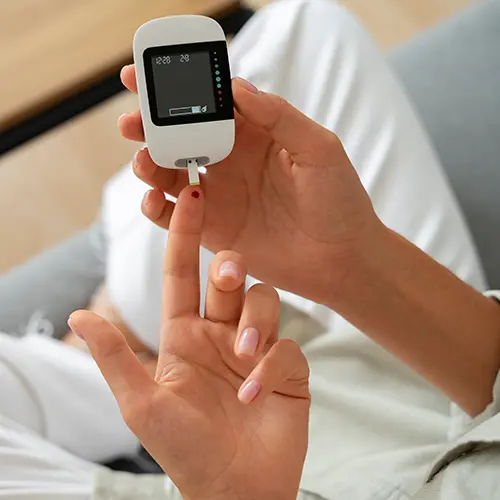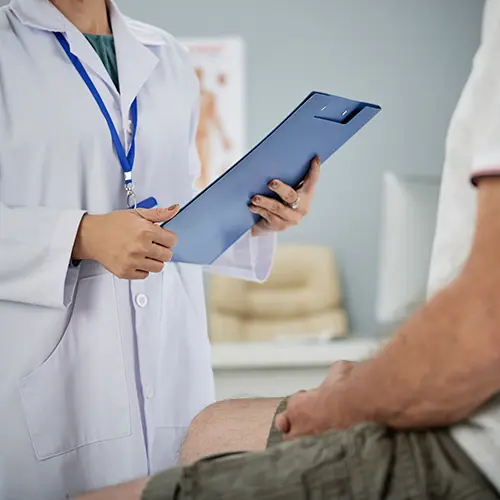Table of Contents
After an angiogram test, you may experience specific effects and sensations. Understanding what to expect after the test will help you better manage your recovery and take appropriate action.
After an angiogram test, it is natural to experience some lightheadedness, possible pain from the sedation, and a small bruise at the insertion site. To ensure proper healing, do not neglect your doctor's recommendations for recovery, and activity restrictions.
In this article, we first focus on the post-angiogram recovery process and angiogram after-effects and common side effects. In the second part, you can read about the home care instruction after an angiogram and when can you get back to normal after an angiogram. In the last part of the article, you can find information about diet and lifestyle recommendations for the recovery period.
The Post-Angiogram Recovery Process
After the angiogram procedure, patients can usually return home the same day. However, it is very important to have a friend or relative accompany them home to reduce discomfort. To prevent the risk of bleeding, be very careful for the first two days and do not carry anything heavy.
After the procedure, a responsible companion should stay with the patient overnight. In some cases, patients may need to stay in the hospital during angiogram recovery.
Diabetic patients should avoid taking specific medicine that their healthcare provider explains for 48 hours after the test to reduce the risk of kidney complications.
Hydration and wound care are other critical point in the healing process. It is very important to stay hydrated during recovery. You also need to keep the incision site clean and dry to prevent infection.
Typically, a follow-up visit will be scheduled with the doctor to assess the recovery progress and review the angiogram results.
Angiogram After-Effects and Common Side Effects
Angiography is a safe procedure used to examine the heart's blood vessels. However, it can lead to some side effects and rare serious complications, and the patient needs a hospital stay in some cases. It is essential to consult your healthcare professionals about potential angiogram risks.
Some of the side effects and complications of angiogram can be lined up as below:
- After angiography, it is normal to experience temporary bruising, pain, and swelling near the insertion site. These problems usually resolve within a few weeks and are not vital signs of a complication nor are causes for concern. Pain relievers can be taken if needed.
- Although rare, complications can include localized infection, mild allergic reactions, and temporary kidney damage. Serious complications such as heart attack, stroke, vascular damage, or severe allergic reactions (anaphylaxis) are extremely rare.
As a result, the benefits of angiography typically outweigh the risks, and the vast majority of patients recover without complications. Knowing about possible side effects can help patients recover faster.
Home Care Instructions After Angiogram
After an angiogram procedure, the patient needs to take care of himself for a smooth recovery process. Here are some of the important guidelines for self-care and recovery after an angiogram:
Rest and avoid tension: Rest for 24 to 48 hours after the procedure. Avoid heavy lifting and strenuous work.
Puncture site care: Follow nurses' instructions for dressing care.
Emergency medical assistance: Contact health care if any unusual symptoms, redness, or increased pain occur in the area.
Driving precautions: Do not drive until your doctor tells you otherwise.
Avoid alcohol: You should avoid alcohol for 24 hours after the procedure.
Following these guidelines will aid a successful recovery after an angiogram. Always seek medical advice for personalized care instructions.
When Can You Get Back to Normal After an Angiogram?
Recovery duration after an angiogram varies from person to person, but you can usually return to your normal activities within a few days. In general, it is possible to say that the steps to return to normal are as follows:
Immediately after the procedure: You may feel weak due to the sedation and you will likely have pain. Rest and never tire yourself out for the rest of the day.
First 24 to 48 hours: Keep rest and avoid lifting heavy objects. Keep the puncture site clean and dry.
First week: Bruising and pain should improve during this time. Be careful when performing physical activities.
First week to two weeks: Gradually resume regular activities and exercise, but avoid strenuous activities.
Driving: There are some driving restrictions after the procedure. Resuming activities like driving may take some time.
Follow your doctor's advice about when it's safe to continue driving, usually after a few days to a week.
Back to work: This depends on your job and how physically demanding it is. Most people can return to work within a week.
Always consult your healthcare provider for specific post-procedure guidelines and recommendations based on your health and the details of your angiogram.
Diet and Lifestyle Recommendations for Recovery
Recovering after an angiogram requires adopting a heart-healthy lifestyle. Focus on a balanced diet rich in fruits, vegetables, whole grains, and lean proteins. Limit saturated and trans fats, as well as sodium to support cardiovascular health. Staying hydrated is crucial, as it aids in flushing out contrast dye and supporting kidney function. Minimize caffeine and alcohol intake to avoid dehydration. Gradually resume light physical activities like walking, and quit smoking to promote better heart health. Additionally, manage stress through relaxation techniques like meditation or yoga. Adhere to prescribed medications and attend follow-up appointments for proper monitoring.
Weight management is vital, achieved through a balanced diet and regular exercise. Aim for 7-9 hours of quality sleep each night to support healing. Remember, everyone's recovery is unique, so always follow your doctor's specific recommendations for a successful recovery after an angiogram. By incorporating these lifestyle adjustments, you can promote cardiovascular well-being and enhance your overall health during the recovery process and beyond.




















